So, that’s what Valve says. What’s it like to actually use the headset? I got to test Index across several different demos and came out very impressed with what I saw.
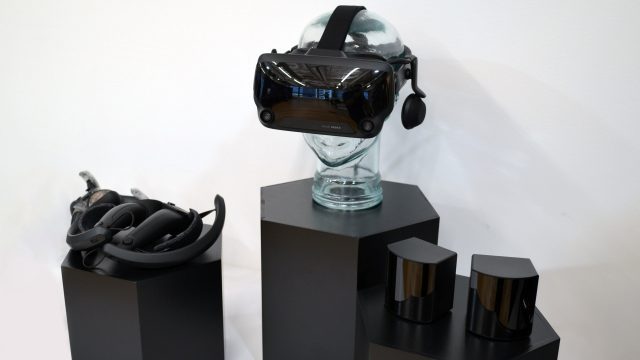
The upgrades to the display—both in low persistence and refresh rate—really make the VR world look more ‘solid’ than ever before. 144Hz looks buttery smooth and feels closer to what you’d expect the real world to look like by pushing latency even lower than typical 90Hz headsets. These two elements are arguably a bigger improvement to the visuals than the upgraded resolution which, indeed, brings a sharper image, but is still far from eliminating the screen door effect.
Field of view is definitely higher than the Vive—thanks to the eye-relief adjustment easily allowing me to dial in the maximum field of view—but the difference didn’t exactly blow me away despite being nice to have. I was able to pull the eye-relief adjustment in as far as it would go while still being perfectly comfortable (some folks might pull back a bit to stop their eyelashes from touching). At that range, I could slightly make out the edges of the display in my peripheral view on the sides and bottom, though I could have easily pulled the eye-relief back just a touch to make that more apparent.
While Valve’s dual-element optics might be focused on a wide field of view and large sweet spot, it seems to have come at the cost of an increase in internal reflections (god rays). Moderately high contrast scenes cause significant glare which unfortunately detracts from the other benefits in clarity.

On the audio front, Valve has done an excellent job with their new headphone design. Index easily has the highest quality audio solution I’ve ever heard in a VR headset. It’s miles ahead of any of the sound-pipe solutions seen in headsets like Go, Quest, and Rift S, and even better than Rift’s headphones which were considered the best, until now. What’s cool is that not only do they sound better than the previous leader, they also feel better—or perhaps they don’t feel like anything… because they don’t actually touch your ears at all, they just hang next to them. This simple but smart design means Valve was able to use larger and more powerful drivers which are capable of greater range than other audio solutions. Index’s headphones get plenty loud and deliver a ton of bass.
Valve says that going with off-ear speakers benefits not just audio quality, but ergonomics too. Not only are they not in the way at all when you put on the headset, they also don’t exert any pressure on your ears as you play, helping another fatigue vector.
One surprising omission from Index is eye-tracking. For all the work that Valve has put into getting the details right, eye-tracking could have synergized very well—everything from telling the user their exact IPD and how to set it, to whether their headset is adjusted for optimal clarity, to foveated rendering to make it easier to achieve stable 144Hz gameplay, and plenty more. We haven’t gotten an answer from Valve on why they opted not to include eye-tracking.
– – — – –
Beyond the headset, Valve is of course pairing Index with the Knuckles controllers and pulling everything together with their SteamVR Tracking solution. Even though it creates more friction for use compared to inside-out tracking, Valve believes the quality of their tracking solution is critical to the fidelity of the experience.
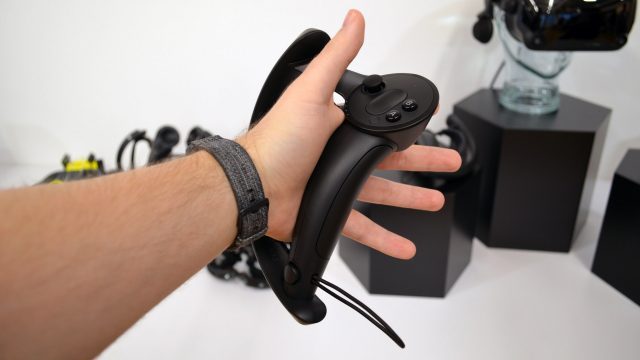
So then what about the cameras on the front of the headset? Valve said that they are “very good computer vision cameras,” but they don’t plan to use them officially for tracking; inside-out tracking “isn’t quite there for us.” They don’t exactly have a firm use-case for them right now, but wanted to make sure they were on board for experimentation and, at a minimum, pass-through video. That said, they plan to release all the code behind the cameras so that developers can play, and more than likely someone will try implementing an unofficial inside-out tracking solution for the headset.
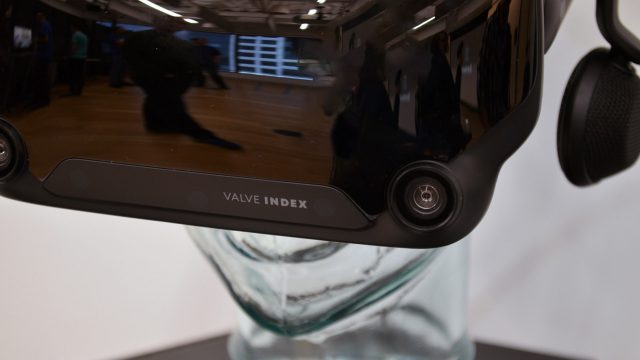
The cameras are one of several ways that Valve hopes Index will be moddable. They call that big gap behind the magnetic faceplate the ‘frunk’ (which I can only assume is a portmanteau of ‘front’ and ‘trunk’), and say it’s purely a generic expansion port for whatever mods people might dream up that rely on a USB 3.0 port. They claim not to have any specific use-case in mind for the frunk, but hope that people will experiment.
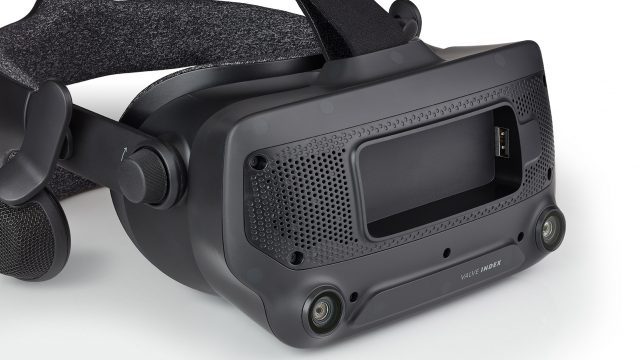
Further on modability, Valve says they will release full CAD models of Index to make it easy for people to design different things for the headset, like the foam face padding which is magnetic and easily removed. Using the CAD models, someone could print a new design for the padding bracket to better fit their face.
– – — – –
So, Index looks and sounds pretty damn good, and seems like it will achieve Valve’s goal of moving the bar forward on VR fidelity. Yes, there are higher resolution headsets out there, like HP’s upcoming Reverb, but Index brings more than a spec sheet to the table—it offers high-end quality across the spectrum.
That said, Index—openly admitted by Valve—does little to address the challenges of cost and ease-of-use.
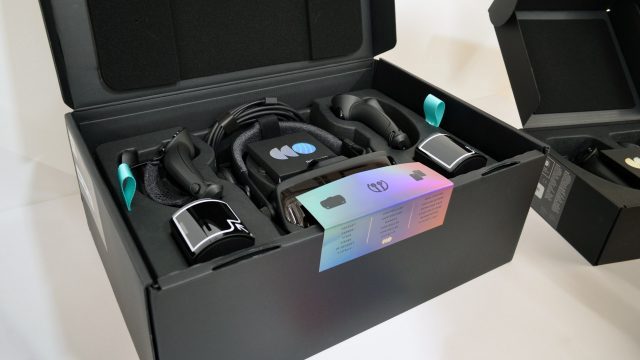
The full Index kit (with headset, controllers, and base stations) will cost a cool $1,000—that’s more than the original Vive at launch (but less than Vive Pro). The outside-in tracking necessitates setting up and maintaining a VR space with some cords running around the room, and the headset’s many adjustments need an experienced user to understand how to dial everything in to achieve top fidelity.
And then there’s the content. These improvements in fidelity are exciting to me and plenty of other enthusiasts, but they just don’t matter that much in the end if they aren’t backed up by excellent content. Despite thousands of VR games on Steam, only a small fraction of those are truly worth playing, and existing enthusiasts—which Valve says Index is positioned towards—will have already gotten their fill of much of that content.
With the reveal of Index, Valve is saying that they plan to release a “flagship VR game” at some point this year, but—incredibly—still aren’t ready to offer any details at all (not even a name, IP, or genre), even as Index is about to become available for pre-order and then launch within the next two months.
Facebook, of course, is taking nearly the opposite approach and focusing not on fidelity, but ease of use and affordability, and they have a strong content library (and a handful of exciting titles coming down the pipeline) to back it up.

But that’s not to say one approach is right and the other is wrong. Valve has chosen their fight, and they want to take on the challenge they believe they’re best equipped to handle. And for Index, that’s pushing the quality bar to show everyone else what the next level of fidelity looks like.
– – — – –
Got more questions? We’ve got more answers. Drop us a line in the comments below.
Disclosure: Valve covered travel and accommodations for Road to VR to attend an event where information for this article was gathered.






